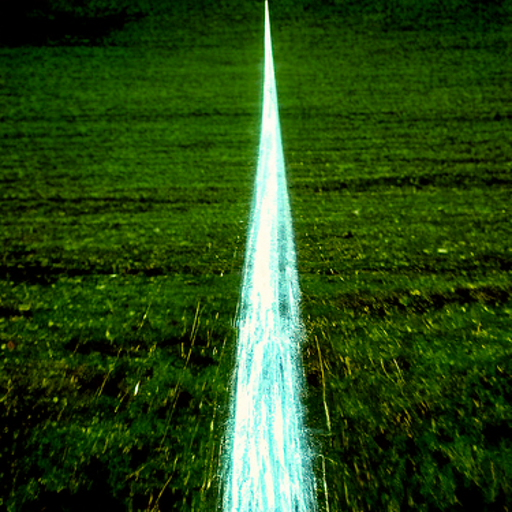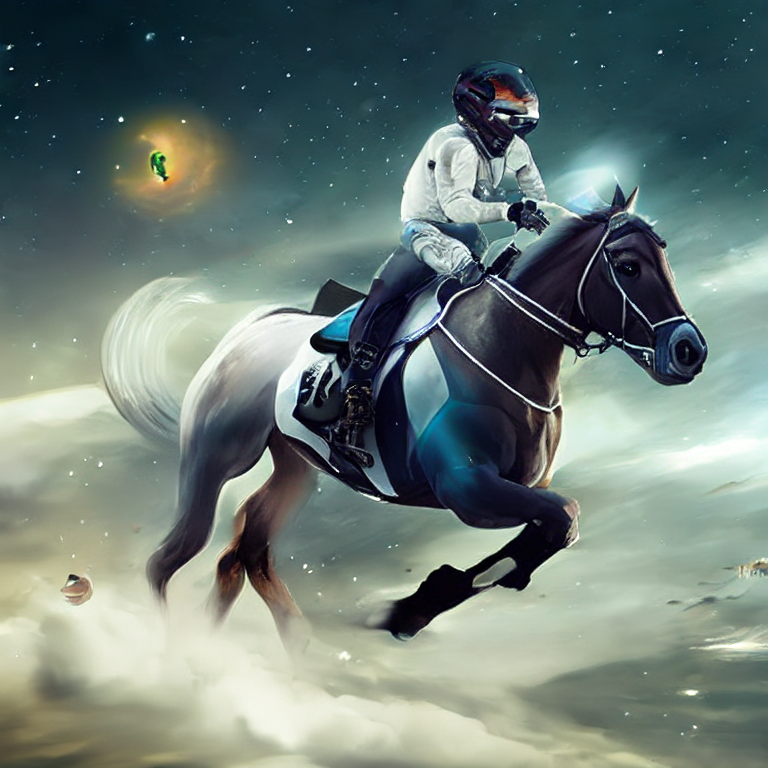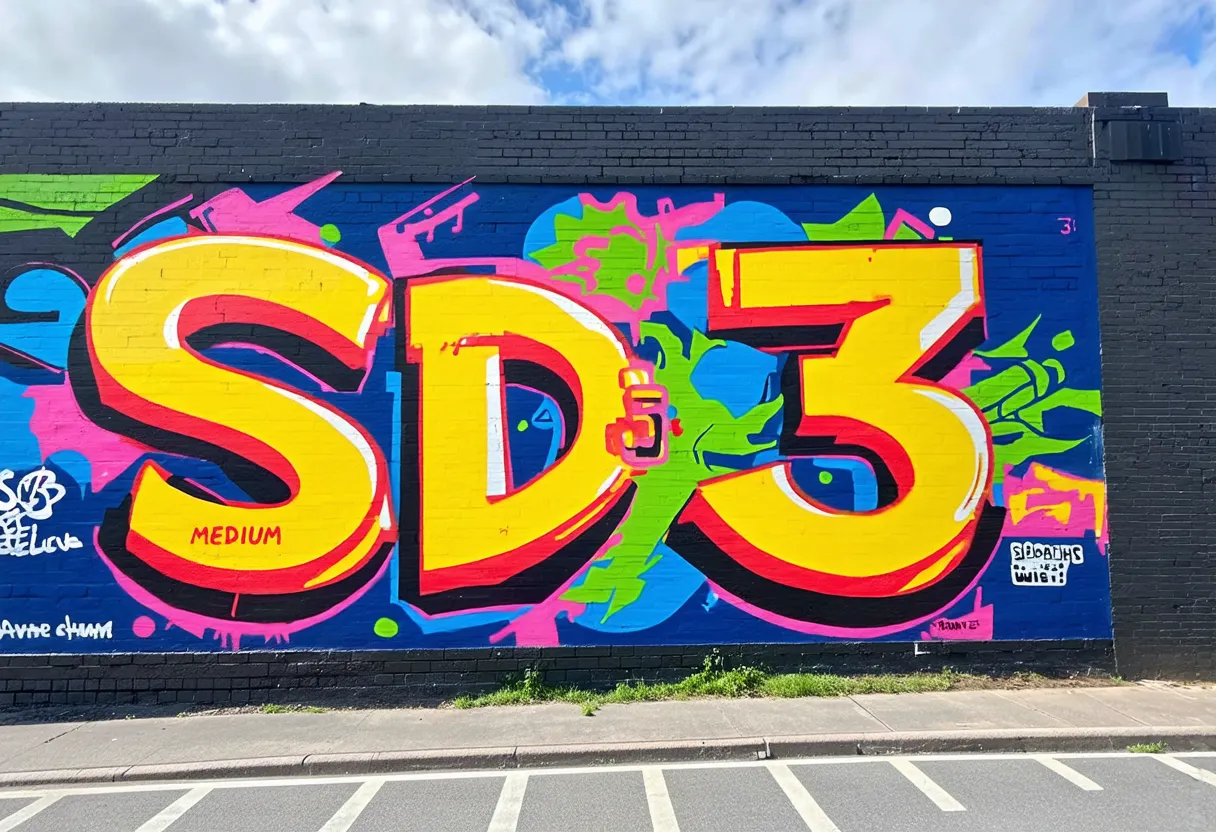sd-aesthetic-guidance
Maintainer: afiaka87

4

| Property | Value |
|---|---|
| Run this model | Run on Replicate |
| API spec | View on Replicate |
| Github link | View on Github |
| Paper link | No paper link provided |
Create account to get full access
Model overview
sd-aesthetic-guidance is a model that builds upon the Stable Diffusion text-to-image model by incorporating aesthetic guidance to produce more visually pleasing outputs. It uses the Aesthetic Predictor model to evaluate the aesthetic quality of the generated images and adjust the output accordingly. This allows users to generate images that are not only conceptually aligned with the input prompt, but also more aesthetically appealing.
Model inputs and outputs
sd-aesthetic-guidance takes a variety of inputs to control the image generation process, including the input prompt, an optional initial image, and several parameters to fine-tune the aesthetic and technical aspects of the output. The model outputs one or more generated images that match the input prompt and demonstrate enhanced aesthetic qualities.
Inputs
- Prompt: The text prompt that describes the desired image.
- Init Image: An optional initial image to use as a starting point for generating variations.
- Aesthetic Rating: An integer value from 1 to 9 that sets the desired level of aesthetic quality, with 9 being the highest.
- Aesthetic Weight: A number between 0 and 1 that determines how much the aesthetic guidance should influence the output.
- Guidance Scale: A scale factor that controls the strength of the text-to-image guidance.
- Prompt Strength: A value between 0 and 1 that determines how much the initial image should be modified to match the input prompt.
- Num Inference Steps: The number of denoising steps to perform during the image generation process.
Outputs
- Generated Images: One or more images that match the input prompt and demonstrate enhanced aesthetic qualities.
Capabilities
sd-aesthetic-guidance allows users to generate high-quality, visually appealing images from text prompts. By incorporating the Aesthetic Predictor model, it can produce images that are not only conceptually aligned with the input, but also more aesthetically pleasing. This makes it a useful tool for creative applications, such as art, design, and illustration.
What can I use it for?
sd-aesthetic-guidance can be used for a variety of creative and visual tasks, such as:
- Generating concept art or illustrations for games, books, or other media
- Creating visually stunning social media graphics or promotional imagery
- Producing unique and aesthetically pleasing stock images or digital art
- Experimenting with different artistic styles and visual aesthetics
The model's ability to generate high-quality, visually appealing images from text prompts makes it a powerful tool for individuals and businesses looking to create engaging visual content.
Things to try
One interesting aspect of sd-aesthetic-guidance is the ability to fine-tune the aesthetic qualities of the generated images by adjusting the Aesthetic Rating and Aesthetic Weight parameters. Try experimenting with different values to see how they affect the output, and see if you can find the sweet spot that produces the most visually pleasing results for your specific use case.
Another interesting experiment would be to use sd-aesthetic-guidance in combination with other Stable Diffusion models, such as Stable Diffusion Inpainting or Stable Diffusion Img2Img. This could allow you to create unique and visually striking hybrid images that blend the aesthetic guidance of sd-aesthetic-guidance with the capabilities of these other models.
This summary was produced with help from an AI and may contain inaccuracies - check out the links to read the original source documents!
Related Models

clip-guided-diffusion

43
clip-guided-diffusion is an AI model that can generate images from text prompts. It works by using a CLIP (Contrastive Language-Image Pre-training) model to guide a denoising diffusion model during the image generation process. This allows the model to produce images that are semantically aligned with the input text. The model was created by afiaka87, who has also developed similar text-to-image models like sd-aesthetic-guidance and retrieval-augmented-diffusion. Model inputs and outputs clip-guided-diffusion takes text prompts as input and generates corresponding images as output. The model can also accept an initial image to blend with the generated output. The main input parameters include the text prompt, the image size, the number of diffusion steps, and the clip guidance scale. Inputs Prompts**: The text prompt(s) to use for image generation, with optional weights. Image Size**: The size of the generated image, which can be 64, 128, 256, or 512 pixels. Timestep Respacing**: The number of diffusion steps to use, which affects the speed and quality of the generated images. Clip Guidance Scale**: The scale for the CLIP spherical distance loss, which controls how closely the generated image matches the text prompt. Outputs Generated Images**: The model outputs one or more images that match the input text prompt. Capabilities clip-guided-diffusion can generate a wide variety of images from text prompts, including scenes, objects, and abstract concepts. The model is particularly skilled at capturing the semantic meaning of the text and producing visually coherent and plausible images. However, the generation process can be relatively slow compared to other text-to-image models. What can I use it for? clip-guided-diffusion can be used for a variety of creative and practical applications, such as: Generating custom artwork and illustrations for personal or commercial use Prototyping and visualizing ideas before implementing them Enhancing existing images by blending them with text-guided generations Exploring and experimenting with different artistic styles and visual concepts Things to try One interesting aspect of clip-guided-diffusion is the ability to control the generated images through the use of weights in the text prompts. By assigning positive or negative weights to different components of the prompt, you can influence the model to emphasize or de-emphasize certain aspects of the output. This can be particularly useful for fine-tuning the generated images to match your specific preferences or requirements. Another useful feature is the ability to blend an existing image with the text-guided diffusion process. This can be helpful for incorporating specific visual elements or styles into the generated output, or for refining and improving upon existing images.
Updated Invalid Date

stable-diffusion

108.9K
Stable Diffusion is a latent text-to-image diffusion model capable of generating photo-realistic images given any text input. Developed by Stability AI, it is an impressive AI model that can create stunning visuals from simple text prompts. The model has several versions, with each newer version being trained for longer and producing higher-quality images than the previous ones. The main advantage of Stable Diffusion is its ability to generate highly detailed and realistic images from a wide range of textual descriptions. This makes it a powerful tool for creative applications, allowing users to visualize their ideas and concepts in a photorealistic way. The model has been trained on a large and diverse dataset, enabling it to handle a broad spectrum of subjects and styles. Model inputs and outputs Inputs Prompt**: The text prompt that describes the desired image. This can be a simple description or a more detailed, creative prompt. Seed**: An optional random seed value to control the randomness of the image generation process. Width and Height**: The desired dimensions of the generated image, which must be multiples of 64. Scheduler**: The algorithm used to generate the image, with options like DPMSolverMultistep. Num Outputs**: The number of images to generate (up to 4). Guidance Scale**: The scale for classifier-free guidance, which controls the trade-off between image quality and faithfulness to the input prompt. Negative Prompt**: Text that specifies things the model should avoid including in the generated image. Num Inference Steps**: The number of denoising steps to perform during the image generation process. Outputs Array of image URLs**: The generated images are returned as an array of URLs pointing to the created images. Capabilities Stable Diffusion is capable of generating a wide variety of photorealistic images from text prompts. It can create images of people, animals, landscapes, architecture, and more, with a high level of detail and accuracy. The model is particularly skilled at rendering complex scenes and capturing the essence of the input prompt. One of the key strengths of Stable Diffusion is its ability to handle diverse prompts, from simple descriptions to more creative and imaginative ideas. The model can generate images of fantastical creatures, surreal landscapes, and even abstract concepts with impressive results. What can I use it for? Stable Diffusion can be used for a variety of creative applications, such as: Visualizing ideas and concepts for art, design, or storytelling Generating images for use in marketing, advertising, or social media Aiding in the development of games, movies, or other visual media Exploring and experimenting with new ideas and artistic styles The model's versatility and high-quality output make it a valuable tool for anyone looking to bring their ideas to life through visual art. By combining the power of AI with human creativity, Stable Diffusion opens up new possibilities for visual expression and innovation. Things to try One interesting aspect of Stable Diffusion is its ability to generate images with a high level of detail and realism. Users can experiment with prompts that combine specific elements, such as "a steam-powered robot exploring a lush, alien jungle," to see how the model handles complex and imaginative scenes. Additionally, the model's support for different image sizes and resolutions allows users to explore the limits of its capabilities. By generating images at various scales, users can see how the model handles the level of detail and complexity required for different use cases, such as high-resolution artwork or smaller social media graphics. Overall, Stable Diffusion is a powerful and versatile AI model that offers endless possibilities for creative expression and exploration. By experimenting with different prompts, settings, and output formats, users can unlock the full potential of this cutting-edge text-to-image technology.
Updated Invalid Date

retrieval-augmented-diffusion

38
The retrieval-augmented-diffusion model, created by Replicate user afiaka87, is a text-to-image generation model that can produce 768px images from text prompts. This model builds upon the CompVis "latent diffusion" approach, which uses a diffusion model to generate images in a learned latent space. By incorporating a retrieval component, the retrieval-augmented-diffusion model can leverage visual examples from databases like OpenImages and ArtBench to guide the generation process and produce more targeted results. Similar models include stable-diffusion, a powerful text-to-image diffusion model, and sd-aesthetic-guidance, which uses aesthetic CLIP embeddings to make stable diffusion outputs more visually pleasing. The latent-diffusion-text2img and glid-3-xl models also leverage latent diffusion for text-to-image and inpainting tasks, respectively. Model inputs and outputs The retrieval-augmented-diffusion model takes a text prompt as input and generates a 768x768 pixel image as output. The model can be conditioned on the text prompt alone, or it can additionally leverage visual examples retrieved from a database to guide the generation process. Inputs Prompts**: A text prompt or set of prompts separated by | that describe the desired image. Image Prompt**: An optional image URL that can be used to generate variations of an existing image. Database Name**: The name of the database to use for visual retrieval, such as "openimages" or various subsets of the ArtBench dataset. Num Database Results**: The number of visually similar examples to retrieve from the database (up to 20). Outputs Generated Images**: The model outputs one or more 768x768 pixel images based on the provided text prompt and any retrieved visual examples. Capabilities The retrieval-augmented-diffusion model is capable of generating a wide variety of photorealistic and artistic images from text prompts. The retrieval component allows the model to leverage relevant visual examples to produce more targeted and coherent results compared to a standard text-to-image diffusion model. For example, a prompt like "a happy pineapple" can produce whimsical, surreal images of anthropomorphized pineapples when using the ArtBench databases, or more realistic depictions of pineapples when using the OpenImages database. What can I use it for? The retrieval-augmented-diffusion model can be used for a variety of creative and generative tasks, such as: Generating unique, high-quality images to illustrate articles, blog posts, or social media content Designing concept art, product mockups, or other visualizations based on textual descriptions Producing custom artwork or marketing materials for clients or personal projects Experimenting with different artistic styles and visual interpretations of text prompts By leveraging the retrieval component, users can tailor the generated images to their specific needs and aesthetic preferences. Things to try One interesting aspect of the retrieval-augmented-diffusion model is its ability to generate images at resolutions higher than the 768x768 that it was trained on. While this can produce some interesting results, it's important to note that the model's controllability and coherence may be reduced at these higher resolutions. Another interesting technique to explore is the use of the PLMS sampling method, which can provide a speedup in generation time while maintaining good image quality. Adjusting the ddim_eta parameter can also be used to fine-tune the balance between sample quality and diversity. Overall, the retrieval-augmented-diffusion model offers a powerful and versatile tool for generating high-quality, visually-grounded images from text prompts. By experimenting with the various input parameters and leveraging the retrieval capabilities, users can unlock a wide range of creative possibilities.
Updated Invalid Date

stable-diffusion-3

1.2K
Stable Diffusion 3 is a text-to-image model developed by Stability AI that has significantly improved performance compared to previous versions. It can generate high-quality, photo-realistic images from text prompts with better understanding of complex prompts, improved typography, and more efficient resource usage. Stable Diffusion 3 builds upon the capabilities of earlier Stable Diffusion models, as well as related text-to-image models like SDXL and Stable Diffusion Img2Img. Model inputs and outputs Stable Diffusion 3 takes in a text prompt, a cfg (guidance scale) value, a seed, aspect ratio, output format, and output quality. It generates an array of image URLs as output. The guidance scale controls how closely the output matches the input prompt, the seed sets the random number generator for reproducibility, and the other parameters allow customizing the image generation. Inputs Prompt**: The text prompt describing the desired image Cfg**: The guidance scale, controlling similarity to the prompt Seed**: A seed value for reproducible image generation Aspect Ratio**: The aspect ratio of the output image Output Format**: The file format of the output image, such as WEBP Output Quality**: The quality setting for the output image Outputs Array of Image URLs**: The generated images as a list of URLs Capabilities Stable Diffusion 3 demonstrates significant improvements in image quality, typography, and complex prompt understanding compared to earlier versions. It can generate highly detailed, photorealistic images from a wide range of textual prompts. The model is also more resource-efficient, allowing for faster generation and deployment. What can I use it for? Stable Diffusion 3 can be used for a variety of creative and commercial applications, such as generating product images, conceptual artwork, illustrations, and more. Its enhanced capabilities make it well-suited for tasks that require high-quality, customized visuals generated from text. Businesses and creators could leverage Stable Diffusion 3 to quickly produce images for marketing, e-commerce, product design, and other visual content needs. Things to try Experiment with Stable Diffusion 3 by providing detailed, multi-sentence prompts that challenge the model's understanding of complex scenes, objects, and styles. Try prompts that combine specific visual elements, styles, and moods to see the model's ability to interpret and generate cohesive, high-quality images. Additionally, play with the guidance scale and other parameters to find the optimal settings for your desired output.
Updated Invalid Date